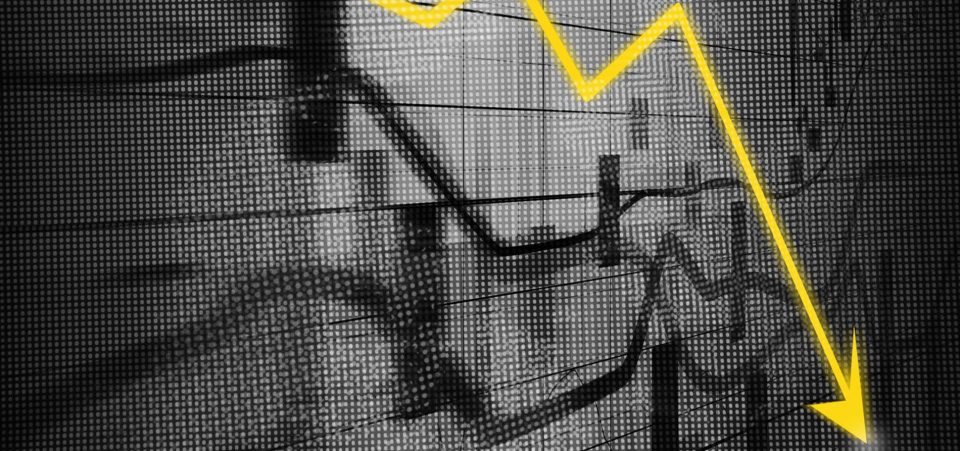The Platinum Price Forecast Is Bearish in 2017
Many expect the platinum price forecast to remain bullish. It was one of the better performing precious metals during 2016. But will the platinum trends keep the same pace even in 2017? Platinum is one of the most attractive precious metals in absolute value, not only in the industrial field, but also from an investment point of view.
Many believe in a favorable, if not downright record, platinum price outlook in 2017. However, optimistic platinum price predictions could crash against a hard wall of reality. Platinum (Pt) is often confused with Palladium (Pd). They have similar uses, but different markets.
The platinum price outlook has lately relied on the outlook for automotive sales. Specifically, platinum is a key material to make catalytic converters. Palladium is also used to make such equipment.
However, platinum is used specifically for diesel-powered vehicles whereas palladium is used in gasoline-powered engines. That said, investors may be fooled into optimism by the sharp rise in platinum price predictions.
Platinum even beat gold at some point in 2016. Platinum price trends topped $1,180/ounce in August 2016. The record price for platinum is $2,150, set in the wake of the 2008 financial crisis. (Source: “Why Platinum Prices Are Poised To Shoot Skywards,” Forbes, April 21, 2014.)
Platinum has various well-known industrial applications and related market appeal. But platinum price predictions still rely on its perception as a “safe-haven” metal. After all, platinum is widely used to make jewelry.
Accordingly, in the summer of 2016, when platinum was hitting its highest points, the world feared the results of the U.S. presidential election. Donald Trump had won the Republican nomination and Hillary Clinton had secured her nomination.
The Realities of Platinum Price Outlook Outweigh Trump Risk
It’s hard to believe now, given the Dow Jones index having topped 20,000. But we forget that economic collapse and financial ruin was the expected side-effect of Trump’s election. Precious metals were an ideal hedge against such calamities. That also helped boost the highly bullish platinum sentiment.
But so far, short of a financial or economic collapse, which crushes prospects for the dollar, platinum cannot rise much further than the summer record, the 2007-2008 highs—if it starts rising in the first place—just as in the case of $120.00 oil or a rare earth company like Molycorp Inc (now bankrupt) at $90.00 in 2011.
The other problem is that diesel cars have come under increasing scrutiny in the United States. In 2015, the United States Environmental Protection Agency (EPA) cited Volkswagen for violating—downright cheating—on emission tests with special software and hardware devices. Other companies have also been suspected.
In the past few weeks of the Obama administration, the EPA accused Fiat Chrysler Automobiles NV (NYSE:FCAU) of having violated EPA regulations with some of its models. Mercedes Benz is rumored to be phasing out several popular diesel models like the “GLS” and “GLE.”
Mercedes has a historic relationship with diesel power; it was one of the first makers to offer such engines on luxury vehicles. That will prompt other manufacturers to follow suit, removing a major bullish carpet from underneath the platinum price outlook, as it were.
Still, it’s difficult to let go of a platinum price surge. Platinum has a special appeal.
Not a day goes by without there being some protest against President Donald Trump. The extent and wide reach of opposition, from media to Congress, is like nothing ever seen in recent American history.
The atmosphere is reminiscent of the worst days of the Lyndon Johnson administration during the Vietnam protest—not to mention the Nixon ‘Watergate” episode. Many Americans must be privately asking themselves just how long Trump can last.
This should boost the platinum price trends toward a bullish outcome. Yet the Dow stood just 29 points away from 20,000 on the Monday after the immigration “weekend from hell.” Trump’s immigration order against refugees and citizens holding passports from seven specific countries has sparked a wave of protests.
This was merely icing on the proverbial cake after the controversy of his first full week in office, marked by walls with Mexico and Keystone pipeline approvals. Technically, such concerns should have weakened the dollar to at least a record yearly low. Instead, the USD to EUR was still at $1.07.
The Fed Will Likely Continue Its Rate Hike Plans
Unless the market starts responding to Trump in the same way as Hollywood stars have been at award shows, the platinum price outlook 2017 is bearish. The Federal Reserve has yet to pronounce it itself, but it’s unlikely that it will reverse its interest rate hike course in 2017.
Only if investors start to lose confidence in the dollar as a currency, more so than Trump as president, will the course change. In times of economic crisis, the demand for platinum as an alternative to the market and the dollar increases. The reason why gold is more popular as an alternative is that platinum is scarcer.
But platinum is also more complicated. As noted above, platinum’s strong industrial demand tends to protect it from unexpected fluctuations in prices. That means it also typically prevents it from taking full advantage of bullish conditions. To better understand the platinum price trends in 2017, we must make an assumption about the Trump administration.
Despite suggestions to the contrary, Trump will finish his first year as president. The film director and producer, Michael Moore, a noted liberal, was right in predicting Trump’s election. He read America well, unlike the Hillary Clinton political machine.
But Moore’s prediction that Trump would not finish his first term might be less successful. Many hoped Trump would not make it to the swearing-in ceremony on January 20. Well, he did, and so far no dire scenario that many have predicted has occurred.
The so-called big voters, the electoral colleges in the various States, more than confirmed Trump’s election. Thus, nobody should expect Trump to vanish; he’s here to stay, controversial as he might be.
Donald Trump may not be the most presidential White House resident in history, according to the usual criteria. But he is the president, and the Republican base is more likely to identify with the man that he is. Moreover, he has a Republican majority.
Any attempt to investigate the president—or even worse, to get him to recuse himself—would mean the abrupt end of many careers in Congress. It is therefore very unlikely that a rumor—or a bad move about immigration, especially as many hypocrites and honest Amercians secretly agree with it—will be enough to stop Trump’s ambitions.
Trump has already overcome the biggest odds: winning the election. Accordingly, the economy and the stock market should proceed along their bullish course until an economic or financial event stops the current course.
It follows that the dollar should continue going up against such currencies as the euro or the British pound. All of this does not favor platinum. Add to that the lower demand perception and platinum loses its floor.
Platinum Is Not Gold
Platinum peaked in 2016 when the market thought the Trump presidency would drag the market down. It makes sense to expect the combination of political and industrial factors governing platinum to send it right back down to the mid-$800s.
Platinum’s practicality is also the enemy of its price. Unlike gold, which has a reputation as an alternative form of investment altogether, platinum relies more on the business climate and its multiple industrial uses.
The Trump period will be full of political risks, the very thing gold needs. Trump may not have crashed the market yet, but there’s no doubt volatility is on the rise. As mentioned earlier, in the automotive industry, platinum is used to produce catalytic converters.
Platinum is also used in the production of various kinds of jewelry, from bracelets, necklaces, rings, pendants, and so on. The use of this metal in jewelry probably derives from its scarcity (which makes it even more sophisticated) and brilliant white finish that makes it a great complement to precious stones or diamonds. Often it is in combination with white gold.
But even scarce metals sometimes get into an oversupply situation. The world platinum market in 2017 could register a surplus for the first time in six years according to Johnson Matthey PLC (LON:JMAT), the world’s top refiner of platinum metals. (Source: “Platinum market may see first surplus in six years in 2017: JM,” Reuters, November 14, 2016.)
Demand for platinum will be lower, likely because of the expected cuts to diesel car models from main manufacturers. There is also a lot of recycled platinum available and Chinese jewelers expect lower demand as well.
The long-term platinum price trends might be even lower than $850.00. New catalytic designs will feature a smaller amount of platinum in Europe, where diesel cars are still popular. (Source: Ibid.) All of this seems to call for a surplus.
There was lower production in South Africa, but it was offset by increased production activities in other countries and the growth of recycled metal. Moreover, demand by Chinese jewelers, usually the most important segment of platinum price predictions, was still weak.
The entire demand from global jewelers could drop this year by nine percent. Therefore, even an optimistic automobile market will not be able to shake off the bearish pressure on platinum in 2017. Certainly, political risk remains high and Trump’s presidency could produce all manners of outcomes.
But even in this climate of uncertainty, platinum responds to different market forces than gold.






